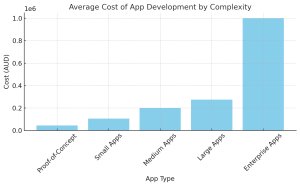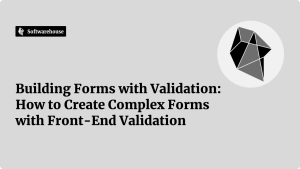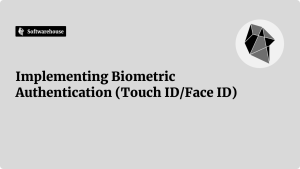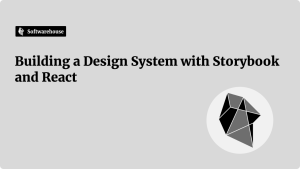Virtual reality has fundamentally redefined how players engage with online casinos, bringing live dealer games into a fully immersive three-dimensional realm. Unlike standard desktop gaming, VR-powered live dealer experiences blend the charm of real-time interaction with cutting-edge graphics and spatial audio to create unparalleled realism. Players step into a digital replica of a casino floor, where they can walk around, choose a table, and interact with dealers and other patrons as if they were physically present.
Have you ever imagined placing a bet with a flick of your virtual hand, or chatting with a croupier while watching the roulette wheel spin beside you in lifelike motion? That's the promise of live dealer VR casinos. This format not only amplifies user engagement but also brings back the social element often lost in traditional online setups. And now, the variety of platforms offering this hybrid of real and virtual continues to grow at a staggering pace.
What Makes VR Integration Special?
Integrating virtual reality with live dealer formats introduces a tactile dimension that flat-screen gaming simply cannot replicate. From the tilt of a chip to the glance of a dealer, every detail becomes more tangible in a VR setting. It's not just gaming—it's presence. The sensation of being "in the room" with other participants boosts emotional immersion and raises the stakes in an entirely new way. Traditional 2D platforms can't evoke the same level of realism, regardless of their visual fidelity.
How Live Dealer Games Work in Virtual Reality
Combining live video feeds with real-time 3D modelling, these games sync dealer actions to VR animations through motion tracking and smart spatial algorithms. Each gesture a dealer makes—be it dealing a card or spinning a wheel—is captured live and translated instantly within your VR environment. The outcome: a seamless blend of real-time human interaction and dynamic digital design. This coordination demands low-latency networks, calibrated hardware, and advanced game engines to deliver a smooth, uninterrupted experience.
Comparison with Traditional Online Casinos
Standard online casinos rely heavily on RNG (random number generator) systems and flat UI/UX interfaces. In contrast, VR live dealer setups create spatial environments, transforming passive spectators into active participants. While traditional setups may appeal to casual users, VR platforms cater to tech enthusiasts seeking full immersion and social dynamics. The tangible sense of presence, combined with advanced input methods, sets them leagues apart in user satisfaction and replay value.
Key Features to Look for in VR Live Dealer Casinos
Choosing the right VR live dealer casino means paying attention to more than just game selection. The overall quality of the virtual environment, seamlessness of interactions, and platform stability all contribute to a player's satisfaction. Smart gamblers look beyond graphics to understand how fluid the experience feels across different devices, how intuitive the controls are, and how the platform handles live interaction between users and lottery sites not on gamstop dealers.
Additionally, personalisation options like avatar creation, seat selection, and gesture-based controls can greatly influence a player’s enjoyment. The technology must fade into the background, allowing gameplay and social interaction to take centre stage. If done correctly, these platforms don't just simulate a casino—they reinvent it.
Immersive Visual and Audio Environments
Sound design and visual depth are paramount in creating realistic experiences. High-resolution textures, ambient audio, and directional sound cues simulate the hustle and bustle of a live casino. When a player hears chips clinking behind them or sees reflections on polished card tables, their brain registers these stimuli as genuine. That sensory layering is what separates compelling VR casinos from mediocre ones.
Interactive Dealer and Player Functions
Can you nod to a dealer or wave at a fellow player and receive a reaction? In well-designed platforms, absolutely. Gesture recognition and spatial communication tools allow for a nuanced level of interaction. Players can even read facial expressions and body language in real time if the system supports advanced avatars. This real-time feedback loop bridges the gap between digital gameplay and physical interaction, enhancing immersion dramatically.
Cross-Platform Compatibility
Whether you’re using a high-end PC rig with an Oculus Rift or a mobile headset like the Meta Quest, seamless functionality is crucial. Cross-platform compatibility ensures that no player is excluded due to their hardware preference. Leading casinos develop with multi-device accessibility in mind, maintaining performance consistency across various VR headsets and operating systems. This democratises access and maximises their audience reach.
Top VR-Compatible Live Dealer Casino Platforms
Not all platforms deliver the same calibre of experience when it comes to VR live dealer games. Some focus heavily on visual effects, while others prioritise network stability or game diversity. The best platforms combine all these elements with robust customer support and secure transactions. Below are three standout examples that exemplify the potential of virtual reality in live gaming.
Platform #1 – Highlight Features and Game Selection
This platform offers an extensive array of classic games, including blackjack, baccarat, and roulette, all fully compatible with VR systems. Its standout feature is a 360-degree game view, allowing users to examine the entire table environment with natural head movements. Fluid animations and detailed facial rendering for dealers create a compelling sense of presence, making the platform a favourite among seasoned players.
Platform #2 – VR Tech Integration and Player Experience
Built from the ground up for virtual reality, this platform utilises proprietary gesture recognition software that allows players to interact without traditional controllers. It supports spatial audio positioning and full avatar customisation. The environment adapts dynamically to user preferences, including lighting schemes and table layouts. This adaptability transforms each gaming session into a tailored experience rather than a one-size-fits-all model.
Platform #3 – Security, Payments, and Live Dealer Quality
Focusing on safety and transactional efficiency, this provider implements blockchain-backed security protocols and real-time AI monitoring to detect suspicious behaviour. Dealers undergo rigorous training not only in traditional game mechanics but also in interacting within a VR space. The result is a consistently fair and secure environment that does not sacrifice entertainment for the sake of compliance.
Popular Live Dealer Games in the VR Space
The immersive capabilities of virtual reality elevate even the most familiar games to new heights. From the spinning tension of roulette wheels to the strategic calm of poker hands, VR transforms ordinary games into extraordinary experiences. Each title in the VR space benefits from added visual flair and more personal engagement, fostering deeper player investment.
For those who thrive on competition, live dealer games in VR bring real stakes and real interactions to the forefront. These aren't solo exercises in probability—they’re social, competitive, and thrillingly unpredictable.
Live Roulette in VR
Roulette, with its kinetic visuals and dynamic betting options, is particularly well-suited for VR adaptation. The tactile sensation of placing chips, combined with the suspenseful clatter of the wheel, creates an environment ripe with anticipation. Watching the ball bounce and fall into a slot from various angles adds to the theatre of the moment, transforming a familiar game into an unforgettable one.
VR Blackjack Tables
Blackjack demands focus, strategy, and immediate feedback—traits that shine in a VR setting. Players can observe dealers’ movements, track card distributions across the table, and even engage in eye contact. With multiple camera angles and head tracking, every nuance is amplified. Players are no longer clicking buttons on a screen; they’re sitting at a virtual table, hands ready, heart pounding.
Poker and Baccarat for Immersive Play
Poker's psychological element becomes even more intense when body language enters the equation through advanced avatars. Players can bluff not just with their bets but with virtual expressions and gestures. Meanwhile, baccarat’s elegance is heightened by lush VR design and crisp animations. These enhancements create a richer emotional experience than standard interfaces ever could.
Technology Behind VR Live Casino Games
Behind the scenes, an intricate web of technology powers every moment of a VR live dealer game. From hardware specifications to real-time streaming algorithms, the seamlessness of the user experience depends on carefully synchronised components. Let’s examine some of the most critical technological aspects that make these platforms possible.
Not surprisingly, innovation in this space continues at a breakneck pace. Companies are racing to minimise latency, improve realism, and reduce hardware barriers, thereby opening the door to broader adoption across the online gambling community.
Hardware Requirements
To participate in VR live dealer games, players need a compatible headset, such as Meta Quest 2 or HTC Vive, and a stable high-speed internet connection. A powerful GPU ensures the games render smoothly, while advanced motion sensors enhance hand tracking and gesture precision. Low latency is vital to prevent desynchronisation between player actions and in-game responses, which could otherwise break immersion. These setups, while slightly demanding, pay off by delivering a visually rich and tactile gaming environment.
Software Providers Leading Innovation
Several key developers are pioneering software solutions tailored for VR live casino integration. Companies like Evolution and Playtech invest heavily in motion capture, spatial rendering, and AI-enhanced interactions to simulate lifelike dealer behaviour. By combining real-time video feeds with dynamic virtual sets, they’re redefining the boundaries of what’s possible in interactive gambling. Their commitment to innovation ensures that players always experience the cutting edge of VR gaming.
Real-Time Streaming and Network Latency
High-definition video must be transmitted to users without delay, which requires optimised servers and CDN (Content Delivery Network) distribution. Adaptive bitrate streaming adjusts quality based on network performance, keeping the action fluid even during dips in bandwidth. Reducing latency is paramount, especially when player decisions directly influence the outcome of a hand or spin. Synchronisation between live footage and virtual representation is what makes these experiences truly seamless.
User Experience in VR Casinos
User experience is about more than just graphics or sound—it’s the holistic feeling of being present in a compelling digital space. For VR casinos, that includes intuitive navigation, meaningful interactions, and well-designed virtual architecture. A successful platform makes players forget they’re using a headset and lets them lose themselves in the moment.
To do this, developers focus on how users move within the environment, how they communicate with others, and how their virtual surroundings react to them. From the moment a player enters the casino lobby, the goal is to evoke emotion and establish flow.
Navigation and Interaction
Well-designed VR casinos allow players to explore via natural head and hand movements, with teleport or free-walk options available. Menus and controls are placed intuitively, ensuring minimal disruption during gameplay. Players can examine cards, place bets, and engage in chats using gesture or voice commands, reducing reliance on external controllers. This fluid interface makes exploration enjoyable and gameplay intuitive, even for new users.
Social Features and Avatar Integration
Customisable avatars enable self-expression and contribute to a social gaming culture where players feel more connected. These avatars can display gestures, facial expressions, and even vocal inflections depending on the platform. Add voice chat and spatial audio, and suddenly your virtual table becomes a vibrant hub of conversation and camaraderie. The result is an environment that mimics the buzz of a real-world casino, fostering friendships and rivalries alike.
VR Casino Lobby Design
Imagine entering a lobby that resembles a luxury hotel, complete with chandeliers, ambient music, and bustling foot traffic. The lobby isn't just a staging area—it’s the first act of the experience. A thoughtfully designed lobby offers clear signage, ambient lighting, and ambient interactions to set the tone. Users can browse games, view live stats, and even preview action at various tables before deciding where to sit. This level of immersion starts the moment the headset goes on.
Bonuses and Promotions for VR Live Casinos
Bonuses play a vital role in player acquisition and retention, and VR casinos are no exception. In fact, these platforms often offer unique promotions specifically tailored to the immersive format. Whether it’s welcome packages or cashback schemes, incentives are cleverly woven into the user journey to keep players engaged.
From virtual reward chests to leaderboard-based events, bonus structures are becoming as interactive as the games themselves. The VR setting allows for creative reward delivery, making the promotional aspect an entertainment feature in its own right.
VR-Specific Welcome Bonuses
To attract new players, many VR casinos offer sign-up packages exclusive to users accessing via headset. These can include matched deposits, free spins, or virtual tokens redeemable at select tables. Some platforms even integrate tutorial missions with rewards, ensuring users learn mechanics while earning bonuses. This dual-purpose strategy enhances both engagement and user education without feeling intrusive.
Cashback and Loyalty Offers
Regular players benefit from cashback on losses, tier-based loyalty points, and exclusive invitations to high-stakes rooms. Cashback rates often increase with higher membership tiers, rewarding sustained engagement. Some platforms also offer weekly challenges, encouraging users to return and complete tasks for escalating rewards. These structured incentives ensure that repeat visits feel rewarding and purposeful.
Tournament and Leaderboard Promotions
Competitive players thrive on challenges, and VR leaderboards provide a tangible metric of performance. Tournaments are displayed in virtual arenas, complete with countdown timers, prize pools, and player avatars. Spectators can watch rounds unfold in real time, creating community-driven excitement. Top performers earn badges, crypto tokens, or access to elite tables—enhancing both status and reward potential.
Safety and Fair Play in VR Live Casinos
Trust and transparency are non-negotiable in any gaming environment, but they become even more critical in the context of virtual reality. The immersive nature of VR amplifies both the excitement and the risk, which is why reputable platforms take extensive measures to protect their users. These range from third-party audits to real-time monitoring and include a suite of responsible gambling tools.
Ultimately, fair play ensures not just legal compliance but also player satisfaction. Without it, no level of graphics or gameplay can compensate for a broken sense of trust.
Licensing and Regulation
All credible VR casinos operate under licences from reputable jurisdictions such as Malta, Gibraltar, or the UK. These licences mandate strict controls over payout percentages, game fairness, and operational security. Licensed operators must submit to periodic audits, ensuring transparency and adherence to international gambling laws. This legal foundation gives players confidence that they’re participating in a regulated, fair environment.
Provably Fair VR Games
Blockchain technology now allows for provably fair games, where algorithms and results can be independently verified by players. In VR casinos, this technology is sometimes integrated into the interface itself—allowing users to view transaction hashes or algorithm parameters without removing their headset. This transparency elevates trust while also educating users about the mechanics behind each game.
Responsible Gambling Tools in Virtual Environments
To prevent problem gambling, VR platforms offer tools such as deposit limits, time-out features, and reality checks. These systems are presented within the VR environment as pop-up interfaces or control panels, easily accessible during gameplay. Some even incorporate AI-driven alerts that flag potentially risky behaviour, prompting users to take breaks. These proactive measures ensure the excitement of the game never outweighs the well-being of the player.
Payment Methods Compatible with VR Casinos
Handling payments within a VR casino must be as seamless as gameplay itself. Because players are immersed in a virtual space, interrupting the experience for payment processing can disrupt flow. That’s why modern VR platforms integrate multiple methods designed for quick, secure transactions without breaking immersion.
From cryptocurrency wallets to contactless mobile options, the future of VR payments is as diverse as the games themselves. Here's how different payment types stack up in virtual environments:


























































































































































































































































































































































































































































































































































































